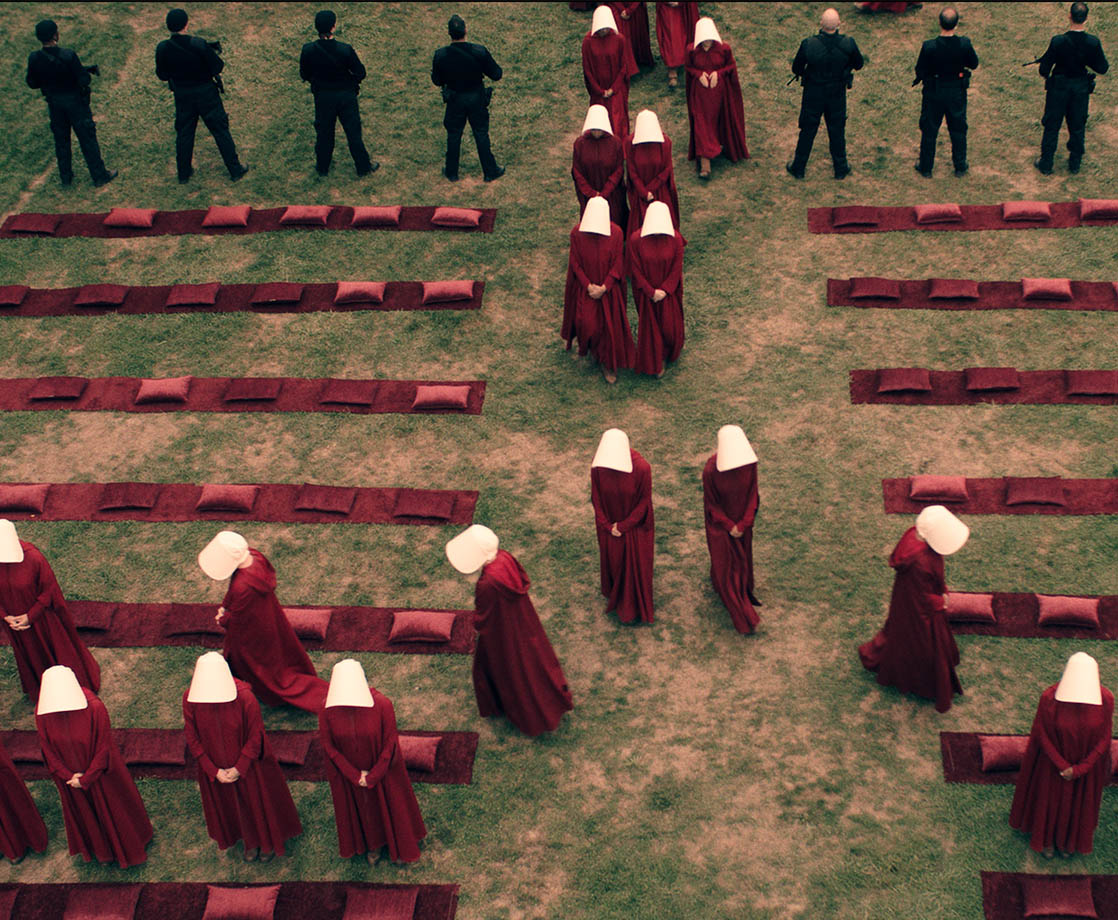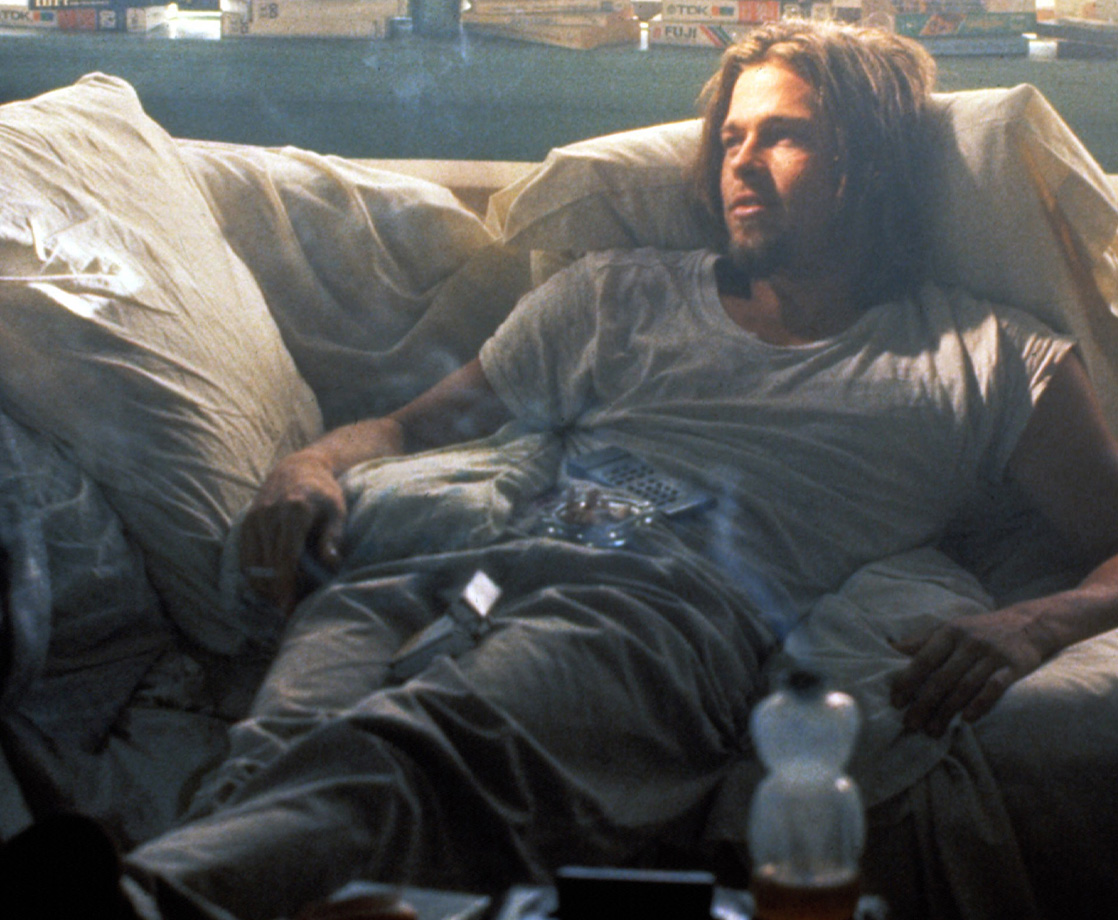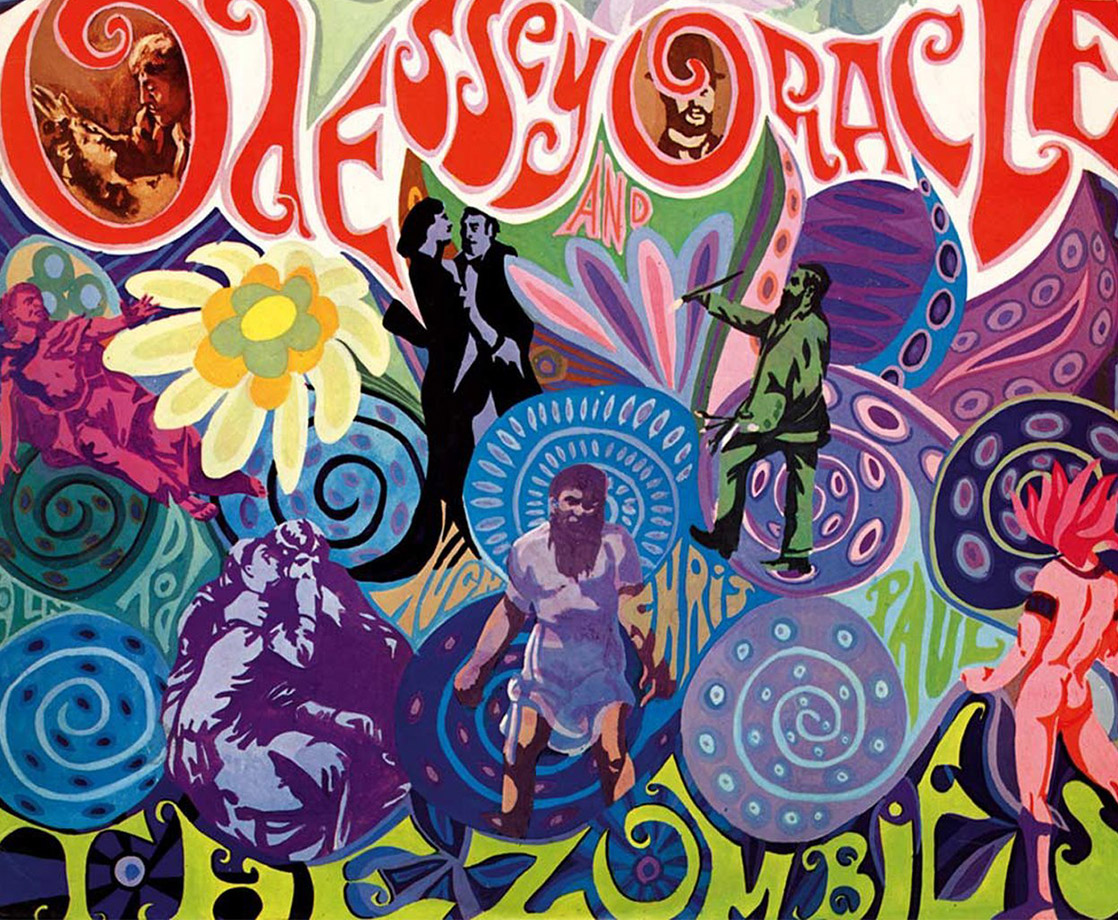The first three episode of "The Handmaid's Tale" are streaming on Hulu now
With the critical and popular success of The Handmaid’s Tale, it is hard to imagine Hulu’s new crown jewel not landing near the top of every top ten list and garnering a slew of Emmy nominations. In some ways, the series has all the hallmarks of a prestige television homerun. Anchored by Mad Men’s Elizabeth Moss, run by television veteran Bruce Miller, and based on beloved source material from luminary Margaret Atwood, the show was always destined for success.
And while the creative team is top notch, the project didn’t materialize without challenges. One of the biggest obstacles they faced is a strange one for a television show: the characters don’t talk very much. In the totalitarian dystopia of Gilead, women are little more than slaves and the population is held firm under the iron boot of religious zealotry. With characters limited in what they can say and how they can say it, The Handmaid’s Tale is forced to rely on voice over and visual language to tell its full story.
The Building Blocks of Visual Language
One of the most underrated aspects of cinematic language is simplicity. Although Reed Morano, the cinematographer-turned-director of the series’ first three episodes, earned the chance to helm the project after turning in a 64-page lookbook, she based her directorial approach on some very simple visual building blocks that she shapes into an elegant cinematic narrative. In the land of Gilead — a theocracy carved out of what was once the eastern United States — societal castes are denoted by uniforms. Handmaids, women who are little more than surrogates, wear red. Their mistresses, who serve as wives to high ranking commanders, wear green. Marthas, the servants, wear pale greys, greens, and browns. Aunts, female religious enforcers, wear harsh browns. As far as the men are concerned, soldier, guards, and police are combined into one force, and they wear all black. Commanders, the male leaders, dress in formal wear, but keep to similarly harsh blacks, blues, and browns. In short, you know who who’s coming a mile away.
In approaching the visual style of the pilot, Morano contrast two distinct cinematic approaches. She told the New York Times, “I wanted to do a lot of extremes. I wanted to do intimate, hand-held shots with Elisabeth [Moss] but I also really wanted to do these formal compositions, so I would be mixing strict compositions with some verite-style shooting.” While some of the scenes are shot with a close, hand-held style, others linger on careful compositions. Of these scenes Moreno said, “The look is very symmetrical. Expressive. Composed and strict frame in Gilead.” This is where these various costumes come in handy.
Developing Language Through Repetition
The power dynamics are very clear in Gilead: Commanders are at the top of the heap, then lesser men enforce the will of the theocratic state. Below the men are the women, with the aristocratic mistresses wielding the most power, then the Aunts who act as enforcers toward other women, then the Marthas and childbearing Handmaids below. This is a clear social dynamic, but also a new world order, and to really understand the stakes of the series, the order has to be imprinted on the audience early and often. Morano deploys three very simple cinematic concepts over and over again to illustrate the power dynamics between the social classes.

Characters' Relationships to Each Other
Throughout the first three episodes, Morano makes the most of shots featuring more than one class of character. In this shot (above), the relationship between the mistresses and the handmaids is made abundantly clear. The handmaid (Moss) is buried deep in the frame and the mistresses dominate.

In this next frame (above), the mistresses dominate again. Moss is buried in the bottom of the shot and mistresses dominate the top 90%. It’s not a standard way to shoot a dining room scene, making a horizontal landscape vertical. This unorthodox camera placement lets us know we’re supposed to pay attention.

In this third image, the handmaids are dominant in the frame physically, but they are shrouded in darkness while the mistresses are brightly lit in the background, drawing focus, and again dominating the shot.

Here we see two characters (Elizabeth Moss and Amanda Brugel) of relatively equal social station shot at roughly the same height and space in the frame…

…but when a mistress (Yvonne Strahovski) enters the frame, the power dynamic shifts.

These power dynamics repeat themselves whenever two characters of unequal station are in a scene together.
Character to Space

Even when multiple classes of character share the frame, Morano uses empty space to reinforce their relative power in the world. Contrast this image of two handmaids staring up at hanged bodies…

…with this image of Aunt Lydia (Anne Dowd) instructing a class of handmaids.

Look how this group of handmaids is shot, low in the frame against a harsh wall…

…compared to this group of mistresses, splayed across the frame during a birthing exercise. Characters with more power look confident in the frame, often occupying the dominant upper quadrants of the shot. Character with less power seem crushed by empty space.
The Menace of Men

As discussed above, the men in the series wear black unless they are commanders, and then they wear similarly strong colors (black, blue, steel grey). Many of the similar concepts of spatial dominance between characters are applied to shots of men and handmaids together.

Often, the visual power relationships we observed among groups of women are taken to their logical extreme when men and women share the same frame.

Morano goes beyond these established power dynamics with her male characters. Often, she will stick a male guard deep in the background of a frame, or add several guards to the edge of a scene to reinforce the wanton danger they present.

As a viewer, you understand that while distinct power relationships exist among the women, it is the men who are the true danger. They could appear around any corner, from behind any building, and dole out violence and even death. While the women grapple for power where they can find it, it is the men, and particularly the men of the ruling class, who truly hold the power.

A Language of Their Own
In three short episodes of The Handmaid’s Tale, Morano and Miller established a distinct visual language to speak in an otherwise quiet (and disquieting) tale. Many sci-fi or alternative history series flail in their first few episodes, dumping exposition yet never really finding much clarity. While there is still so much to learn about Gilead in The Handmaid’s Tale, you come away from these early episodes with a deep knowledge of the world. You may not know every detail about the government or every peculiarity of day-to-day life, but you understand the power dynamics and the stakes for the characters. You understand the danger that awaits a handmaid at every turn. You understand the perilous world they have been thrust into. You understand that the only hope for anything resembling a fulfilling life is escape. You understand all of this in large part because the visual storytelling of the series has told you again and again and again in a nuanced and unforgettable fashion.
Follow Brenden on Twitter











